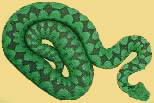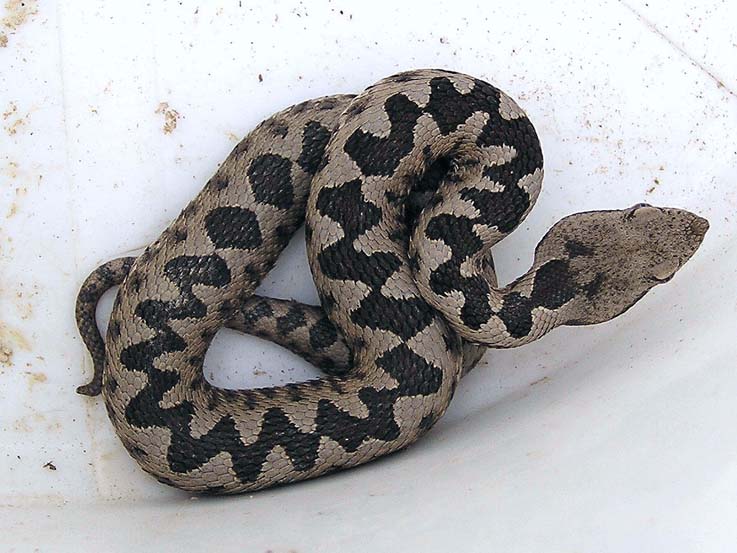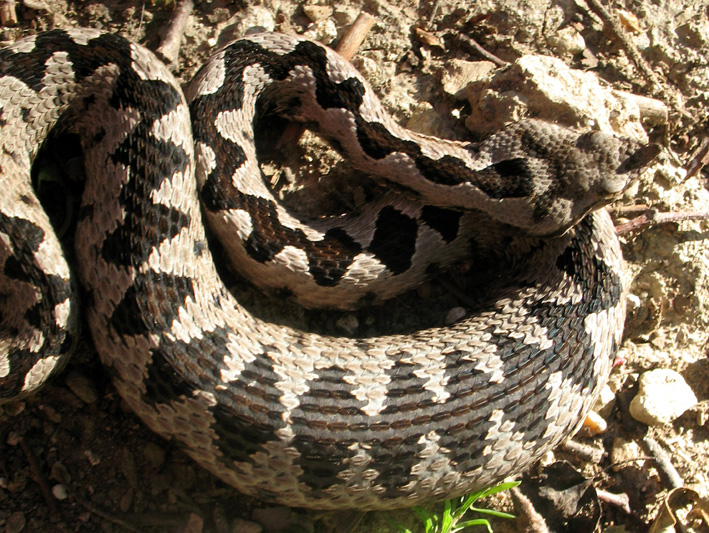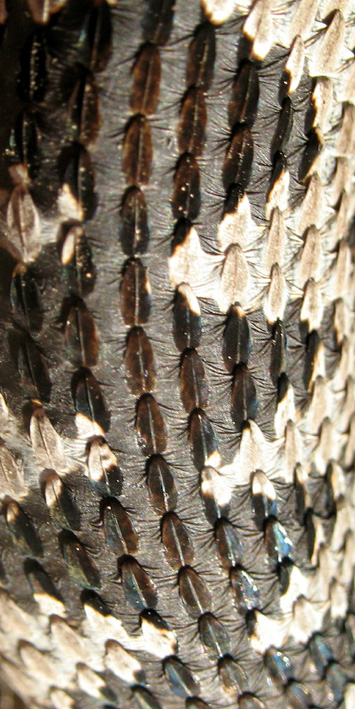 |
Aesculapian
Snake
Grass
Snake
Smooth
Snake
Nose-horned
Viper
Common European Viper
 |
Adults are usually between 60-80 cm, males larger than females and can reach 100 cm. The only eastern European snake with a distinct nose-horn. Body relatively stout. Males are greyish, females are brownish, greyish-brown, reddish-brown. Rarely yellow (1), pinkish or greenish. A dark (black, brown-black) line that forms a zig-zag on back (doesn't have to be continuously connected). Only in rare cases is the zig-zag pale or more as a line. Belly is pink, greyish, spotted (darkly). Underside of tail is red, orange, pink, green, yellowish... Back scales are keeled.
There are 3 subspecies in Europe: V. a. meridionalis, V. a. montadoni, V. a. ammodytes and 1 in Asia- V. a. transcaucasiana.
Most favourite are dry sunny habitats with some vegetation and rocks (rock-piles, dry-stone walls, meadows with dense low bushes...), occasionally climbs low bushes and trees (in search of nesting birds, sunning), in dry-stone walls searching for lizards. In Spring and Autumn active by day, in Summer more active during dusk and night.
Feeds on mice, lizards, nesting birds and their young, other snakes. Young feed on lizards, insects, mice.
Mating takes place on the end of April and in May (20-30 days). Females give birth to live young (4-15(20), 15-18(23) cm) by the end of August or September. From the moment of their birth they are equipped with venom.
Relatively slow, but fast if needed, often when surprised hisses and/or runs, or stays perfectly still. Although it's very easy to make them mad, rarely bites.
Venom: Europe's most
venomous snake, in the past caused regular human deaths (today that
possibility is rare, normally about a week's stay in hospital, severe
symptoms of poisoning). Fangs can be up to 1 cm long. Dramatic swelling of
the bite site, hurts a lot.
By venom strength (in Croatia), populations around Slunj have the most
potent venom. Second are those on Velebit, third are those around Zagreb
and fourth are those around Krapina.
DID YOU KNOW:
* A lot of people say that Nose-horneds can jump, which is not true. They are fat snakes because of their body fat, so they don't have enough muscle power for that (but they can still strike very fast). That "myth" came into being probably while people were walking at night in summer near dry-stone walls, above which was a bush or tree on which the Nose-horned climbed, so when they got bit, since they couldn't see well because of the darkness, they thought it jumped. That is one version.
* A Nose-horned is very scared of water and doesn't like to get wet unless it's a life and death situation, so they can be scared off by splashing them with fresh water. Sometimes even one drop is enough.
* A Nose-horned that is 2 years old (arround 30 cm) already eats adult mice.
* Nose-horneds can be told appart one individual from another by their zig-zag pattern. I noticed similarities. Does that imply a genetic relation/heritage?
VIDEO
(0.9MB):
Nose-horned Viper bites a glove
VIDEO
(3.85MB):
Movement
Left:
after skin sheding
Left:
after feeding


